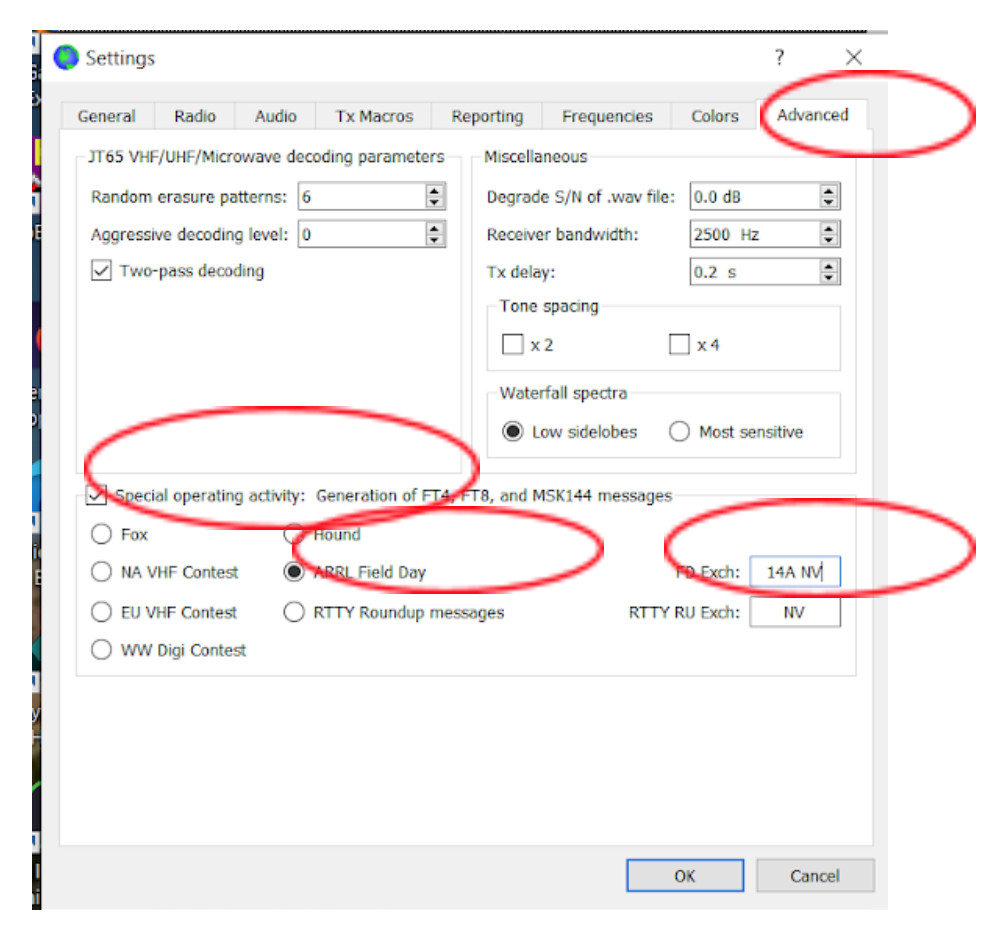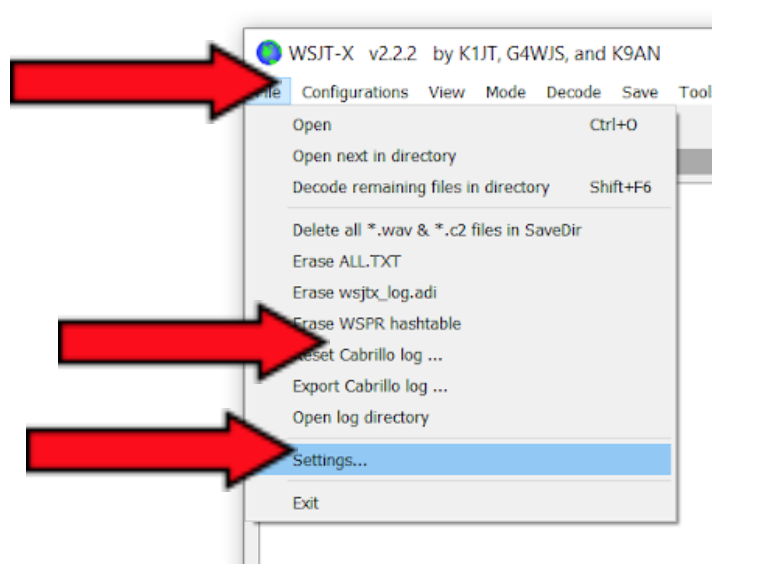WSJT-X Modes
Currently, the WSJT-X modes do not handle the standard QSO Party type exchanges. For the Nevada QSO Party we have developed a ‘work around’ to allow the use of FT8 and FT4 using the Field Day overlay. Each of the seventeen Nevada counties or countylines in alphabetical order have been assigned a number/letter combination. The signal report ‘599’ will be assumed as is the custom in most contests and any completed FT8/4 contact has that quality. The Section report will be your location, eg, NV would be Nevada, SD is South Dakota, EPA will be Eastern Pennsylvania, etc.
To make this work, all entrants will need to close their normal logging program and open the WSJT-X program. DO NOT try to use the window in N1MM, it will not log the contact properly. If you make FT8 contacts WSJT-X will create a separate Cabrillo Log of just those contacts in the WSJT-X program. You will need to send in both logs with your entry. We will process the WSJT-X log to make it conform with the format of the main log, expand the countyline contacts, and combine it with the main log.
You must use the Field Day setting in the ‘Advanced’ tab of the ‘Settings’ section to set the proper exchange.


Be sure to ‘Reset Cabrillo Log’ before you start the contest to remove any earlier contacts. Nevada stations will use their county number/letter combination followed by ‘NV’ for the section. On the ‘Tab 1’ messages in the 6th space, change the FD to NV to alert other stations that you are calling CQ for the Nevada QSO Party. Your exchange to station W1AW in CT would look like this:
CQ NV W6US DN10
W6US W1AW 1A CT
W1AW W6US R 14A NV
W6US W1AW RR73
W1AW W6US 73
My county is Pershing which is 14A and my section is Nevada, W1AW gives the ‘1A’ which just represents a ‘599’ and their section, CT for Connecticut. Nevada countyline operations would use the appropriate county line number/letter combination. When the logs are received, we will be able to turn these countyline numbers into the appropriate number of QSOs and add them to the log.
Out of state stations would us a ‘1A’ and their ARRL/RAC Section or “DX”, and they could also set the ‘Tab 1’ messages in the 6th space on the entry window, changing the FD to NV to alert other stations that you are calling CQ for the Nevada QSO Party. Since it isn’t Field Day, all operators should also be looking at stations that are still using FD as we should be the only ones using this system. Also, let’s use a frequency 4kHz up from the normal FT8 or FT4 frequencies, ie, 14078 for 20M FT8.
Instate operators should only call stations that have the NV or FD in their CQ message. Other stations are probably not aware of our contest, and it is virtually impossible, 13 characters at a time, to explain this………
When calling CQ, about every 5th call you can send the free message (5th space on the entry window) www.nvqso.com to alert them to this website to read the rules. Also, using the frequencies 4kHz above the normal FT8 and FT4 frequencies will help separate us from the normal traffic.
This will NOT work if you try to run WSJT-X in a window from N1MM. Do not worry about dupes or multipliers as these will be taken care of when we combine and rescore the contest. Single logs that have the WSJT contacts in them that have been manually entered and with the county number translated to the proper 5 character county designator and a ‘599’ signal report will also be added. Single logs where the user used the WSJT window within N1MM+ will have messed up exchanges and those QSOs will be ignored.
The WSJT Cabrillo log should be named <callsign>.cbr as is automatically done by WSJT-X, before attaching it with your log for all other modes. You will have 2 logs attached to your entry.
This is more complicated that the usual entry procedure, but until a version of the WSJT-X program is developed to handle QSO Party exchanges, this one will work for states with 256 or less counties and countyline operations.